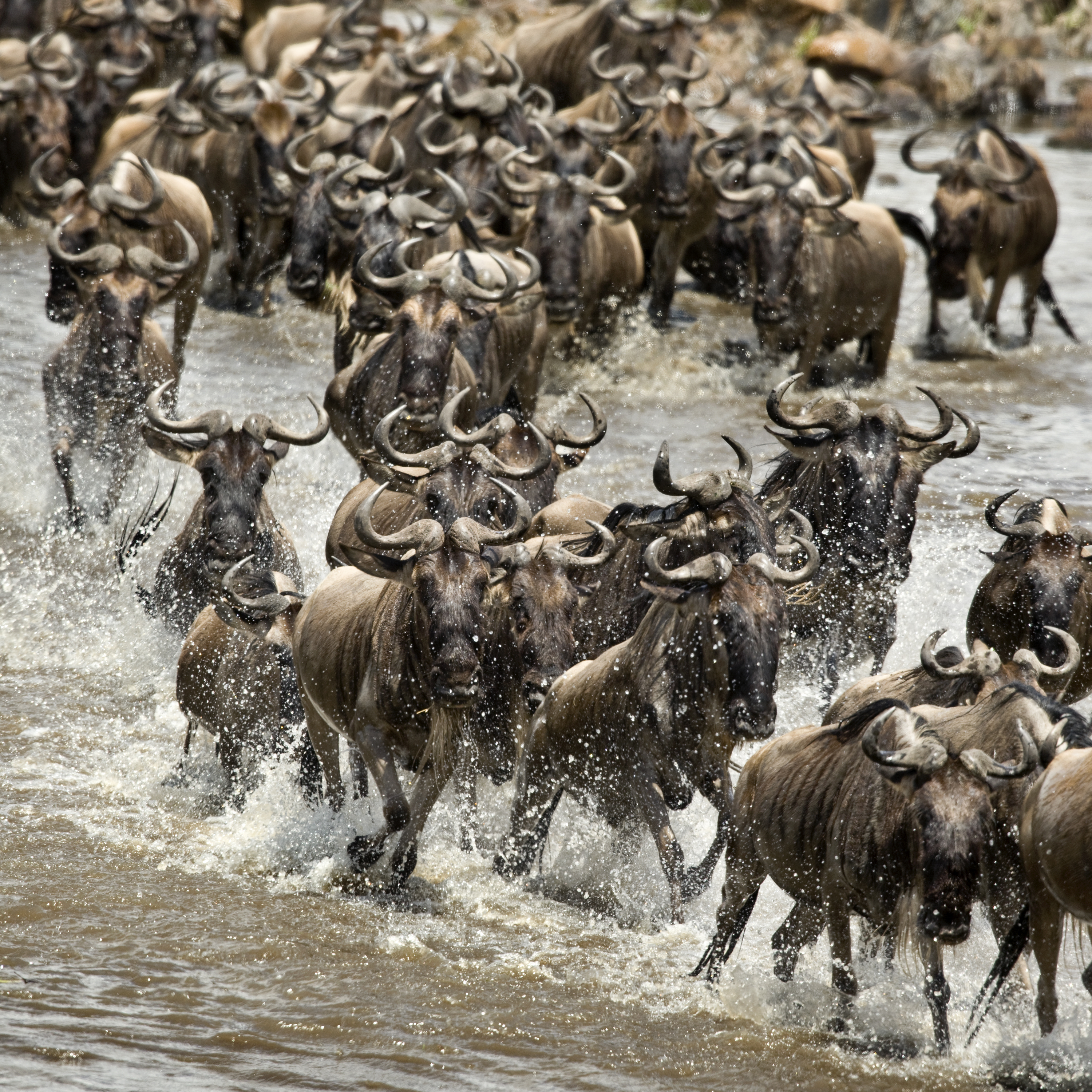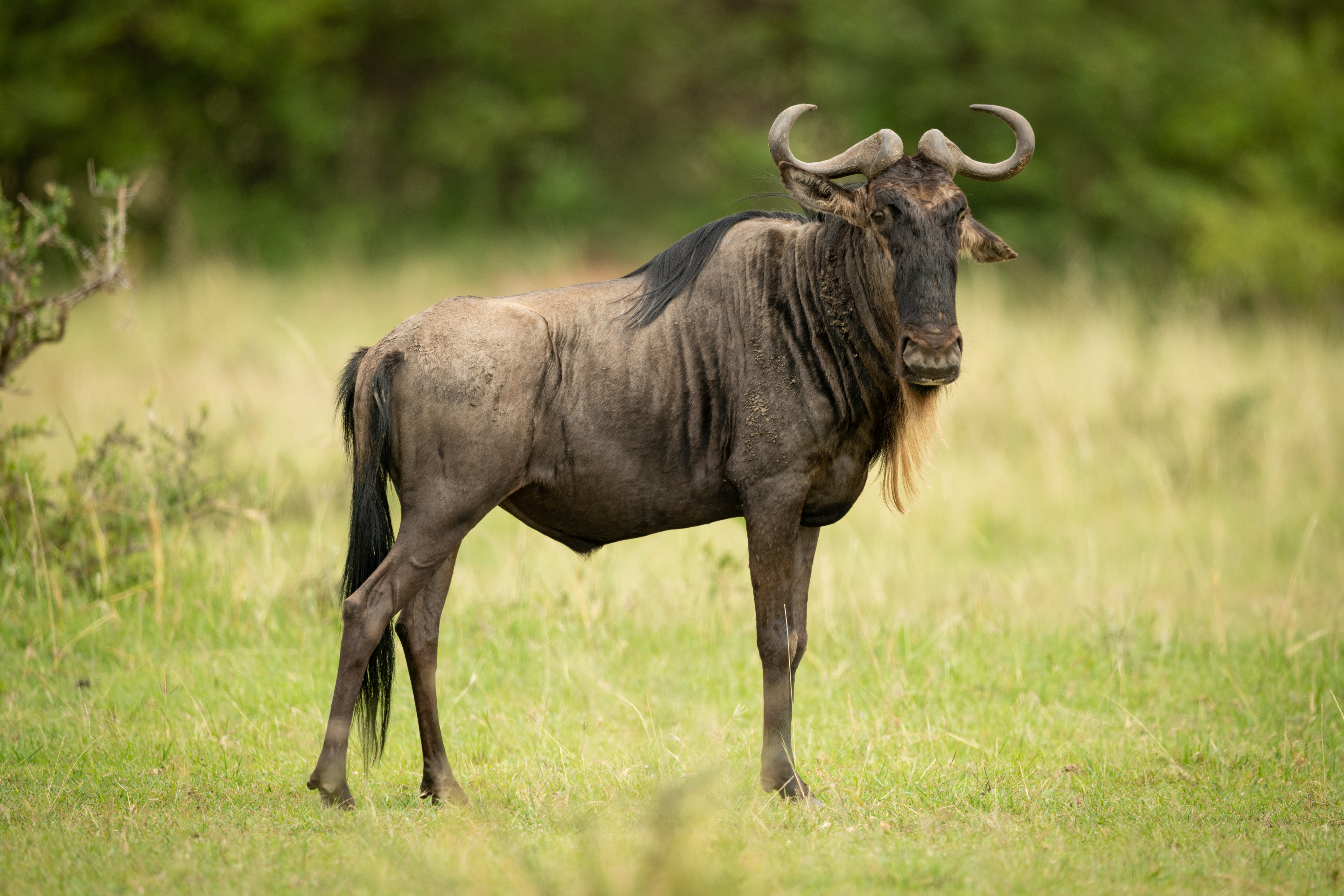Wildebeest << WIHL duh `beest`, >> , also called gnu << noo >> , is either of two large African antelopes . Wildebeests have high, massive shoulders. A thick neck supports a large head with long, curved horns. The antelopes also have thin legs and a horselike tail. They eat leaves, twigs, and grass.

The common wildebeest, (also called the blue wildebeest or white-bearded wildebeest) stands about 41/2 feet (137 centimeters) high. It has a long, sad-looking face. The animal ranges from yellowish-brown to gray in color. It has dark vertical stripes on its shoulders and neck and often sports tuffs of long hair on the face and tail. Common wildebeests graze in herds. They live in grasslands and bush regions from northern Kenya to northern South Africa and Namibia . The black wildebeest is found only in South Africa. It stands about 31/2 feet (107 centimeters) high. The animal has a fierce-looking, hairy face. It ranges from brown to black. It has a yellowish-white tail.
Loading the player...Wildebeest migration
Wildebeest take part in an annual migration across the Serengeti Plain. Each year, from July through October, more than 1 million wildebeest migrate between Tanzania and Kenya. At the end of the dry season, the animals follow the rains in search of green pasture. Thousands of gazelle , eland , hartebeest , and zebra join the wildebeest in this great trek. During the migration, the animals must cross rain-swollen rivers and face dangers from crocodiles and other large predators to reach areas with fresh grass.

